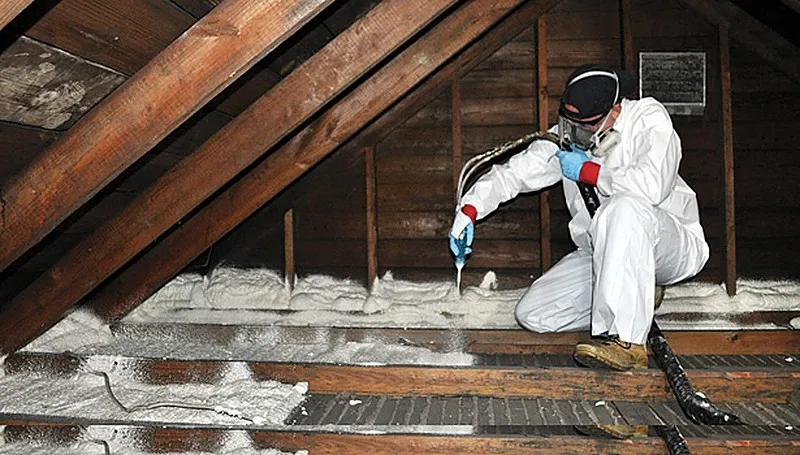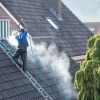Air sealing is an often overlooked yet critical practice for homeowners aiming to lower energy consumption. An effective air sealing strategy can significantly reduce heating and cooling costs, improve comfort, and create a healthier indoor environment.
This guide will delve into air sealing, discussing expert techniques and practical advice to help homeowners make their homes more energy-efficient.
Table of Contents
Why is Air Sealing Important?
Air leaks in a home can lead to significant energy loss. According to the U.S. Department of Energy, air leakage accounts for 25-40% of the energy used for heating and cooling in a typical home. That’s a considerable amount of wasted energy and money!
By properly air sealing your home, you can prevent conditioned air from escaping and unconditioned air from entering, resulting in lower energy consumption and costs.
Where to Start
Before diving into air sealing techniques, it’s crucial to identify where potential air leaks may be present in your home. Common air leak areas include windows, doors, electrical outlets, plumbing penetrations, and recessed lighting fixtures.
You can conduct a DIY home energy audit or hire a professional to perform an energy assessment to pinpoint these areas.
Expert Air Sealing Techniques
There are various techniques for properly air-sealing your home, and it’s best to consult a professional for specific recommendations. However, here are the guidelines and some expert techniques that can help lower energy consumption:
- Caulking – This versatile material is perfect for sealing gaps around windows, doors, and baseboards.
- Weatherstripping – This method is affordable for sealing air leaks around doors and windows. Weatherstripping comes in various materials, such as foam, vinyl, or silicone.
- Spray foam insulation – This expanding foam can be used to fill larger gaps and holes where air may be leaking into your home.
- Seal air ducts – Seal any leaks or gaps in your home’s air ducts to prevent conditioned air from escaping.
- Insulate properly – Adding insulation to your home can help reduce energy loss and improve overall comfort. Insulation should be installed correctly, without gaps or voids, for maximum effectiveness.
Practical Tips for Homeowners
Aside from these expert techniques, there are some practical tips that homeowners can follow to improve their home’s energy efficiency through air sealing:
- Seal exterior wall penetrations – Make sure to seal any gaps around pipes, wires, and vents where they enter your home.
- Install door sweeps – These devices attach to the bottom of doors to prevent air leaks.
- Use caulk or foam to seal around windows – These are common areas for air leakage, and sealing them can make a significant difference in energy consumption.
- Replace old weatherstripping – Over time, weatherstripping can become worn out and less effective. Make sure to replace it when needed.
Tools and Equipment You Need
Some tools and equipment you may need for air sealing your home include:
- Caulking gun – For applying caulk.
- Utility knife – For cutting weatherstripping, insulation, and foam.
- Screwdriver – To remove outlet covers and other fixtures for air sealing.
- Flashlight – For better visibility in hard-to-reach areas.
- Measuring tape – To measure and cut weatherstripping, insulation, and foam accurately.
Additional Tips for Maintaining an Energy-Efficient Home
Air sealing is just one method for improving your home’s energy efficiency. Here are some additional tips to keep in mind:
- Regularly replace air filters – This helps maintain proper airflow and prevent your HVAC system from working harder than necessary.
- Invest in a programmable thermostat – This allows you to schedule temperature adjustments so you’re not heating or cooling an empty home.
- Use natural ventilation – On cooler days, open windows and fans to bring in fresh air instead of relying on your HVAC system.
The Benefits of Air Sealing
In addition to lowering energy consumption and costs, air sealing can bring about many other benefits for homeowners. These include:
- Improved indoor air quality – By preventing outside air from entering the home through leaks, air sealing can help reduce pollutants, allergens, and moisture.
- Increased comfort – Sealing air leaks can prevent drafts and cold spots, making your home more comfortable year-round.
- Reduced noise – Air sealing can also help reduce outside noise from entering your home. Noise pollution can be a significant issue for homeowners in busy or noisy areas.
Should You Hire Professionals?
While some air sealing techniques can be DIY projects, it’s always best to consult a professional for recommendations and to ensure proper installation. Professionals have the knowledge and experience to identify all potential air leaks in your home and use industry-standard materials for effective air sealing.
Hiring professionals may save you time and money in the long run by preventing costly mistakes.
Conclusion
The art of air sealing is a crucial practice for homeowners looking to lower energy consumption and costs while improving comfort and indoor air quality. With expert techniques, practical tips, and the right tools and equipment, you can effectively seal air leaks in your home and reap the many benefits it brings.
Remember to follow other energy-efficient practices to maintain a comfortable, healthy, cost-effective home.
I believe in the power of words and I think God has blessed me with the same. I have a strong experience in the area of writing and love to share my work with the readers. Happy reading!!







